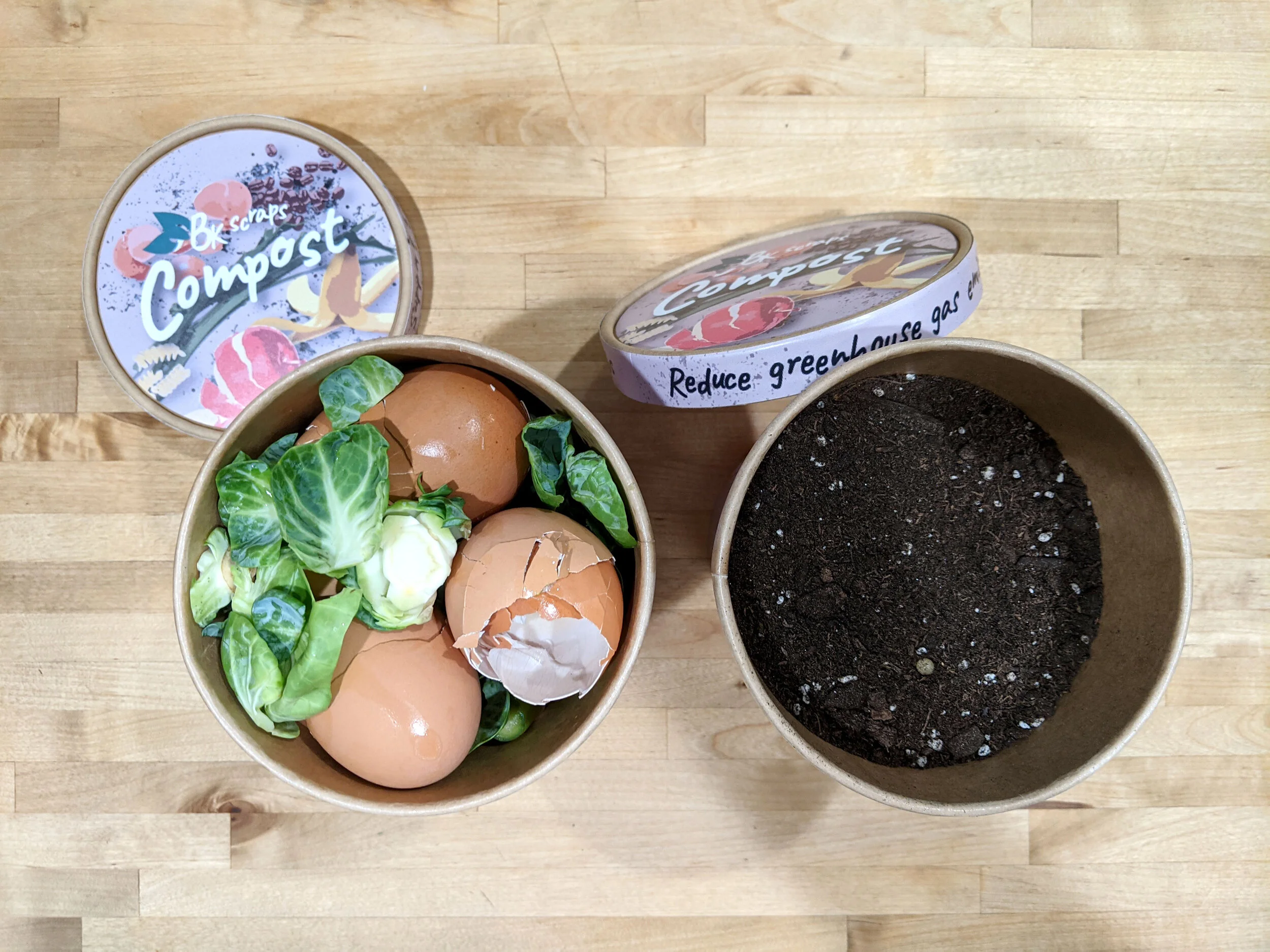BK Scraps
An educational composting container.
2021 | 5 Weeks
Service Design | Package Design | Tools: Sketching, Illustrator, Photoshop, Design Research
Student Project for Master’s Degree in Industrial Design
DESIGN BRIEF
Select an area of impact from Project Drawdown and develop a solution to reduce carbon emissions in that area.
DESIGN QUESTION
How might we make community composting easier for those in NYC?
SOLUTION
BK scraps is an educational compost container provided free to users as part of a Brooklyn-based pilot program for the NYC Compost Project.
A user keeps the container in their freezer as they gradually fill it with food scraps. When full, they take it to a food scrap drop-off site and pick up a new container full of finished compost. The container itself can also be composted.
RESEARCH
The Challenge and Value of Composting
There are good reasons that composting is confusing. What can be composted varies by method or facility as well as municipal region. There isn’t yet universal iconography for composting, nor universal guidelines.
Composting is the last step in the food recovery hierarchy before the land fill, and a critical stage to intervene.
Why Compost?
Composting is a process that “converts organic material into stable soil carbon, while retaining water and nutrients of the original matter. The result is carbon sequestration as well as production of a valuable fertilizer” (https://drawdown.org/solutions/ composting).
The composting process requires moisture, air, and heat to allow microbes to do their work. Landfills don’t provide these conditions, and organic matter that goes to landfills breaks down to methane, a greenhouse gas 25 times worse than CO2.
When we don’t compost, greenhouse gas emissions rise, and organic resources are lost.
Food Waste is a Major Component of Landfill Waste
In 2018 the amount of waste composted was 4.1 percent. [Not much!]
About 24 percent of everything sent to landfill was food waste. That’s the biggest piece of the landfill pie.
Landfills are a major source of human-related methane emissions in the United States, accounting for about 14 percent of these emissions in 2017.
PROCESS
I wanted to focus on the actions of users at home, creating a freezer container that would provide convenience and guidance for those new to composting.
Freezing compost removes the time-sensitivity of storing and getting rid of food scraps. In the freezer food scraps don’t attract pests and have no odor.
I used the form factor of an ice cream container, which:
signals belonging in a freezer
is convenient for storage and transport
allowed me use the visual association to provide many types of information in a familiar format and size
The technical challenge of this project was creating a custom template to fit the kraft paperboard containers, and getting the instructive elements clear.
SERVICE DESIGN
I created a service map to show how my container fits in with the existing system DSNY has for community composting.
The highlighted areas show where BK scraps adds something new to the system, addressing some of the obstacles to participation.
FINAL PROTOTYPE
Key components of the final design:
Basic instructions for what can and cannot be composted
A QR code to direct people where to find their local drop off site
Contact information for compost support
Directions to the BK scraps app for detailed guidance
It provides key stats about composting and indicates some of the benefits, for example this is a 1 qt container, which in a landfill would produce 2.7 oz of methane.
I had a string of prints done on satin sticker paper to create the visual models.
Feedback from the NYC Composting program encouraged me to incorporate an app to allow for more detailed guidelines and FAQs.
This would be manufactured by the city in paperboard and provided free at the compost drop-off sites as well as farmer’s markets, co-ops, and the like. It targets those interested in composting but new to it.






Dropping off scraps and picking up compost creates a sense of exchange and highlights the successful life cycle of the user’s food waste, connecting people to their communities and to the environment.
I appreciate that the fine print of the INGREDIENTS and NEVER CONTAINS sections of the label describe the drop off requirements as well as the compost components.







